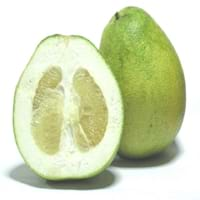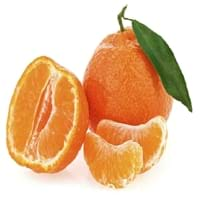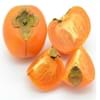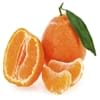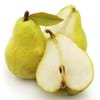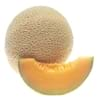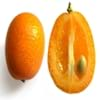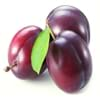Health Benefits
Cancer prevention, Heart care, Prevents Urinary Tract Infection
Cancer prevention, Heart care, Increases metabolic rate, Reduces stress
General Benefits
Digestive aid, Fights against infections, Flu treatment, Healing of wounds, Helps in weight loss, Treatment of common cold
Boosts immune system, Controls blood pressure, Digestive aid, Eye care, Helps in weight loss
Skin Benefits
Anti-aging benefits, Brightens and lightens complexion
Brightens and lightens complexion, Treatment of acne, Treatment of dark spots
Hair Benefits
Promotes longer and healthier hair, Protects hair
Promotes longer and healthier hair, Protects hair
Allergy Symptoms
Abdominal cramps, Abdominal pains, Diarrhea, Lightheadedness, Nasal congestion, Nausea, Swallowing difficulties, Swelling of mouth, tongue or lips, Vomiting
Abdominal pains, Breathing difficulty, Coughing, Diarrhea, Drop in blood pressure, Fainting, Runny nose, Skin rash, Sneezing, Swelling of mouth, tongue or lips, Vomiting
Side Effects
Allergic reaction, Dizziness, Stomach pain
Allergic reaction
Best Time to Eat
As a snack in the late afternoon, Don't consume at night and before bed, Eat the fresh ones, avoid mixing with any other foods, don't eat after meal., Morning time (before lunch)
As a snack in the late afternoon, Don't consume at night and before bed, Eat the fresh ones, avoid mixing with any other foods, don't eat after meal., Morning time (before lunch)
Vitamin B5 (Pantothenic Acid)
Not Available
Vitamin B9 (Folic acid)
Not Available
Vitamin C (Ascorbic Acid)
Vitamin E (Tocopherole)
Not Available
Vitamin K (Phyllochinone)
Not Available
Calories in Fresh Fruit with Peel
Not Available
Calories in Fresh Fruit without Peel
Not Available
Calories in Frozen Form
Not Available
Not Available
Calories in Dried Form
Not Available
Calories in Canned Form
Not Available
Not Available
Calories in Jam
Not Available
Type
Citrus, Tropical
Citrus
Season
All seasons
Autumn
Varieties
Chandler, Cocktail, Cuban Shaddock, Hirado Buntan, Honey, Jaffa Red, Mato Buntan, Pomelit, Reinking, Siamese Sweet and Sweetie
Clemenules or Nules and Nadorcott
Color
Green, Pink, Red, Yellow
Orange
Inside Color
Creamy Yellow
Orange
Texture
Succulent
Succulent
Taste
Juicy, Sweet
Sweet, Tangy, Tart
Origin
Malaysia, South-Eastern Asia, Thailand
China
Soil Type
Clay, Loam, Sandy
Loam, Sandy, Well-drained
Climatic Conditions
Warm
Warm to hot climate
Facts about
- Flowers of pomelo fruit are used to make perfumes.
- Pomelo tree wood is used for the manufacture of tool handles.
- Life of pomelo tree is around 10 years.
- Height of pomelo can be 15-20 feet.
- Clementine was first grown at the citrus research center in USA in 1909.
- It is called as"Christmas orange" as it's limited growing season falls during winter.
- It's a hybrid between Mediterranean and Oranges.
Other Countries
Argentina, India, Israel, Mexico, South Africa, Sudan, Thailand, Turkey, United States of America
Argentina, Brazil, Egypt, Italy, Japan, Morocco, Turkey, United States of America
Top Importer
Europe
United States of America
Top Exporter
United States of America
Spain
Botanical Name
Citrus maxima
Citrus clementina
Synonym
Citrus grandis
Not Available
Subkingdom
Tracheobionta
Tracheobionta
Division
Magnoliophyta
Magnoliophyta
Class
Magnoliopsida
Magnoliopsida
Order
Sapindales
Sapindales
Species
C. maxima
C. clementina
Generic Group
Citrus fruit
Citrus fruit
Difference Between Pomelo and Clementine
We might think that Pomelo and Clementine are similar with respect to nutritional value and health benefits. But the nutrient content of both fruits is different. Pomelo and Clementine Facts such as their taste, shape, color, and size are also distinct. The difference between Pomelo and Clementine is explained here.
The amount of calories in 100 gm of fresh Pomelo and Clementine with peel is 38.00 kcal and Not Available and the amount of calories without peel is Not Available and 47.00 kcal respectively. Thus, Pomelo and Clementine belong to Low Calorie Fruits and Low Calorie Fruits category.These fruits might or might not differ with respect to their scientific classification. The order of Pomelo and Clementine is Sapindales and Sapindales respectively. Pomelo belongs to Rutaceae family and Clementine belongs to Rutaceae family. Pomelo belongs to Citrus genus of C. maxima species and Clementine belongs to Citrus genus of C. clementina species. Beings plants, both fruits belong to Plantae Kingdom.
